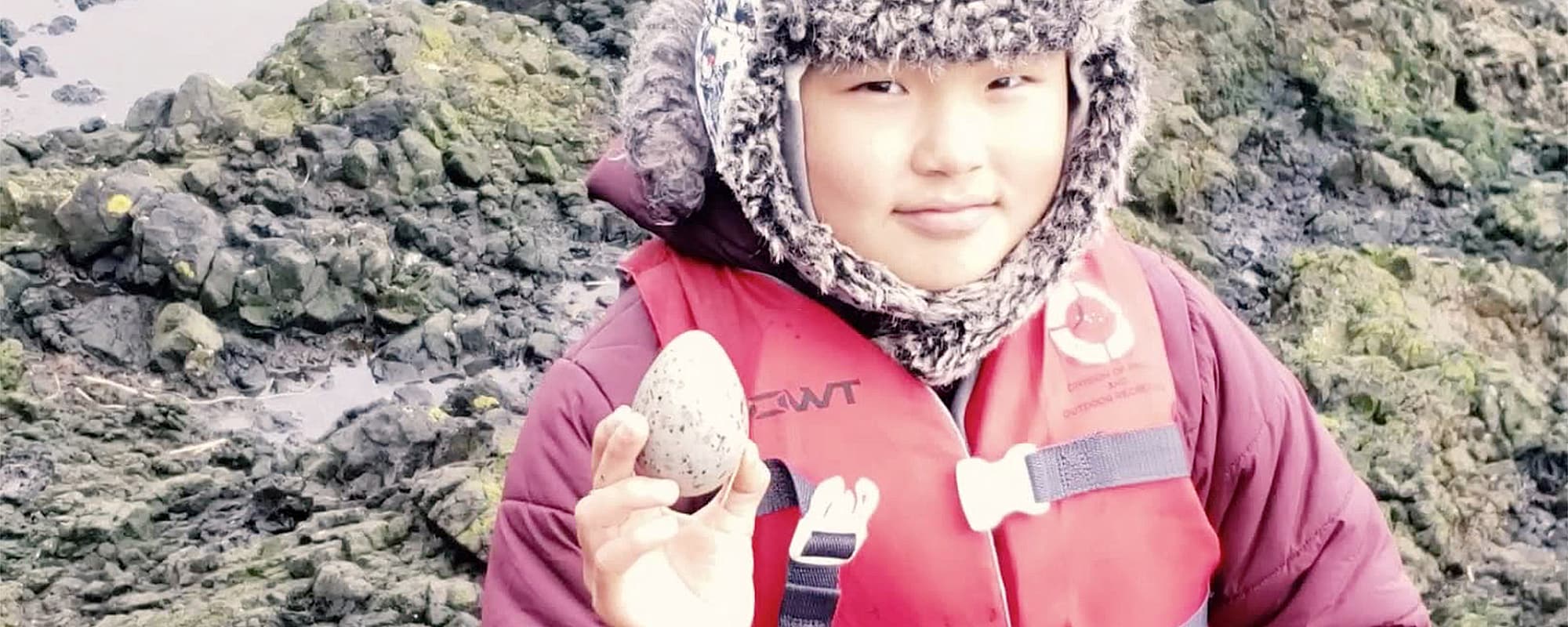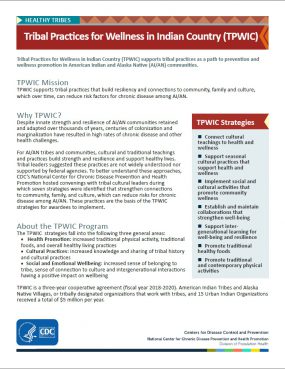Tribal Practices for Wellness in Indian Country (TPWIC)

Tribal Practices for Wellness in Indian Country (TPWIC) supports tribal practices that promote cultural connectedness as a pathway to wellness among American Indian and Alaska Native (AI/AN) communities.
TPWIC Mission
TPWIC supports tribal practices and cultural traditions to build resiliency and strengthen community and cultural connections for improved physical, mental, emotional, and spiritual health and wellbeing within AI/AN communities.
The Centers for Disease Control and Prevention (CDC) funds 36 Tribes and Urban Indian Organizations through the TPWIC cooperative agreement, with the goal of reducing illness and death from chronic diseases. The long-term goals of TPWIC are to increase resilience and use of cultural practices to reduce illness and death from chronic diseases such as diabetes, heart disease, stroke, and cancer.
Why Tribal Practices for Wellness in Indian Country?
AI/AN communities have many strengths and resiliency based on tribal culture and traditional ways of life. However, AI/AN culture and traditions have been severely disrupted by colonialism, loss of land, and policies such as assimilation, relocation, and tribal termination. This has resulted in historical trauma, as well as health, social, and economic inequities, which have put AI/AN populations at higher risk for chronic diseases.
CDC’s National Center for Chronic Disease Prevention and Health Promotion met with tribal cultural leaders to identify traditional and cultural practices to strengthen community, family, and cultural connections for the reduction of chronic disease risks among AI/AN communities.
Tribal leaders suggested these strategies because they were not widely understood nor supported by federal agencies at that time. For AI/AN tribes and communities, cultural and traditional teachings and practices build strength and resilience and support healthy lives. These practices have been the basis of the TPWIC program since 2018.
About the TPWIC Program
TPWIC aims to support mental health and emotional wellbeing among community members. TPWIC success is measured by:
- Increased cultural connectedness.
- Increased social connectedness.
- Increased consumption of healthy traditional foods and/or increased physical activity in communities.
TPWIC supports a 5-year cooperative agreement (2022–2026) with approximately $5 million in funding per year. Funding is for American Indian Tribes, Alaska Native Villages, tribal organizations that work with tribes, and Urban Indian Organizations
- Family and community activities that connect cultural teachings to health and wellness.
- Seasonal cultural and traditional practices that support health and wellness.
- Social and cultural activities that promote community wellness.
- Intergenerational learning opportunities that support wellness and resilience.
- Cultural teachings and practices about traditional healthy foods to promote health, sustenance, and sustainability.
- Traditional and contemporary physical activities that strengthen wellbeing.
Printable summary sheet [PDF – 286 KB] of the Tribal Practices for Wellness in Indian Country program at a glance.
